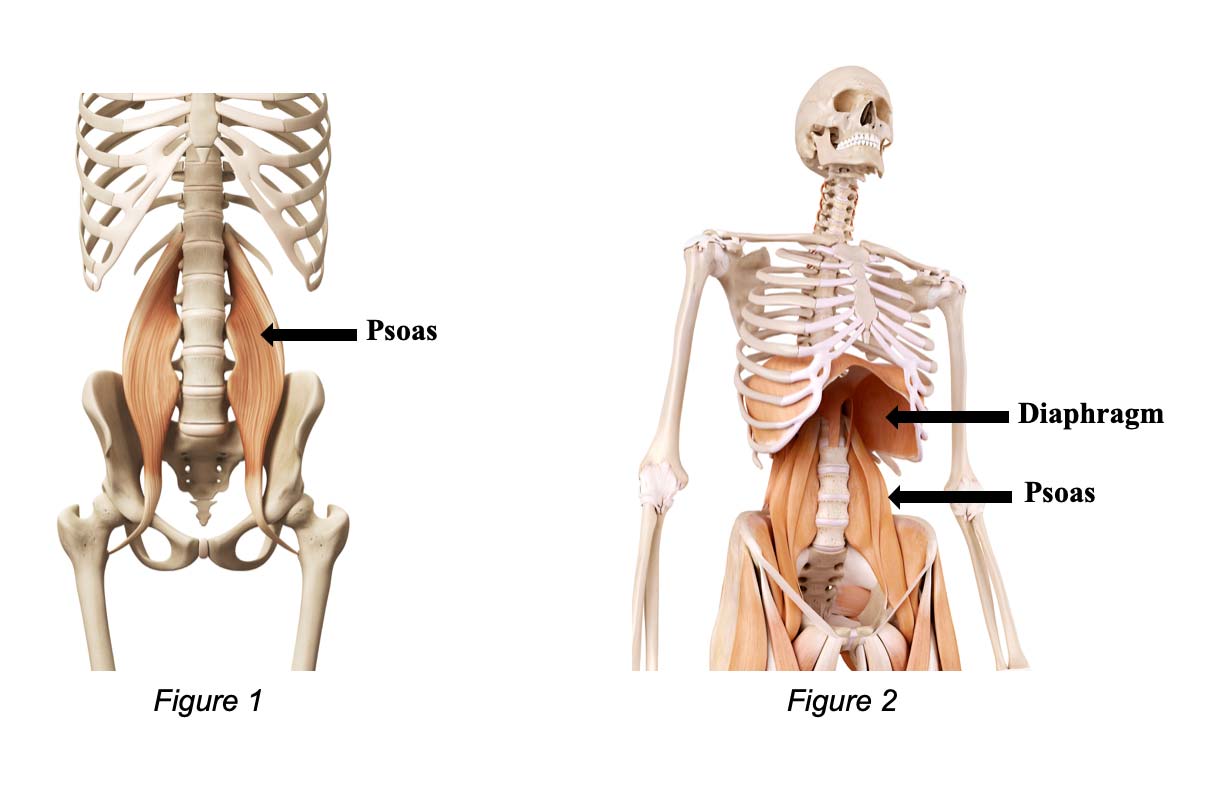If you’re reading this, congrats! You’ve officially made it to the third and final post in this series! Blogs 1 and 2 unpacked the basic anatomy of breath and explored breath techniques to cultivate more power in the weight room and on the field. Let’s dive into another way you can use your breath to unlock athletic potential.
May I humbly present – the Psoas!
The psoas muscle (pronounced /so-as/) is a primary hip flexor that’s located on each side of the lower spine. It extends down through the pelvis and attaches to the thigh bones. The psoas is essential for walking, running, and stabilizing the spine. For these reasons, optimal psoas function is required for baseball players to reach peak performance.

A tight psoas muscle can create serious problems like pain in the low back, pelvis, hips, and knees. Tight psoas muscles can hinder a player’s joint alignment and posture and limit the ability to run fast, jump high, and throw hard. No bueno!
How do hip flexors become tight? A main cause is sitting for prolonged periods of time. When seated, the psoas is contracted and shortened. Over time, lots of sitting can result in the pelvis tilting forward, an exaggerated curve in the lower spine, and tight hamstrings. You can imagine how this would affect the quality of movement in the lower body! Believe it or not, baseball players actually do a lot of sitting. Think about the time spent in the dugout, bullpen, and during travel to and from games. And catchers…you guys are a whole different ball game! Hours of squatting keeps the psoas ultra-short (which equals ultra-tight)!
Physical and psychological stress can also make for tight hip flexors. The psoas is made of perceptive tissue, and is often referred to as the “fight or flight” muscle because it’s the muscle used to brawl or run when a threat is perceived. So, if a player is under stress, the psoas is unconsciously activated (i.e. shortened) and that internal tension is housed in the muscle tissue.
See how the hip flexors can become problematic even in the most elite players?
Fortunately, there are a ton of ways to combat tight hip flexors (yoga, foam rolling, and massage are common therapies). But did you know that you can use your breath to help release tight psoas muscles? Come on, you had to see that coming!
Interestingly, the psoas and diaphragm muscles are interconnected (see Figure 2 above). The ligaments of the diaphragm actually cross over the psoas. Because of this relationship, a tight psoas muscle can have an effect on the diaphragm’s performance and vice versa. This is why proper breathing is SO important! Movement of your diaphragm helps calm down the “fight or flight” stress response which helps relax the psoas muscle. This gives baseball players the ability to produce fast and powerful movements that provide explosive power.
Before you go trying to stretch your psoas into submission, keep in mind that this muscle is chronically tense due to positioning or from physical and psycho-emotional stressors. One of the best places to start is by working to turn off the psoas and allowing it to completely relax. This can be achieved through a simple restorative position known as a supine psoas release. In this position, the breath and gravity help to relax the psoas. It is also the perfect time to work on moving the diaphragm with the breathing technique reviewed in Blog Post 1.
After resting the psoas, try prone pelvic tilts. These exercises use a contract-relax approach to lengthen the psoas and get the pelvis into a more neutral position. You’ll need a chair (or weight bench), rolled-up towel or blanket, and a light sandbag (optional).
- Lie on your back with your hips and knees flexed with legs supported on a chair or weight bench.
- Bring awareness to your breath by resting your hands on your belly
- As you inhale, aim to direct air past your chest to expand your belly, lower back, and sides of your waist.
- As you exhale, allow your belly, lower back, and waist to draw in and the chest to fall.
- Shoot for a 5-count inhale followed by a 5-count exhale
- You can massage and further relax the psoas in this position by placing a light sandbag across the hips (you could also use a yoga bolster or pillow with a light kettlebell or dumbbell resting on top)
- Hold this posture for at least 5 minutes while continuing your diaphragmatic breathing practice

- Lie on your stomach with a rolled-up blanket or towel under your thighs (an inch or so below your hip bones) and resting your forehead on stacked hands.
- Contract your psoas by pushing your thighs down toward the floor to tilt the pelvis backward.
- Hold for 3 breaths.
- Relax for 3 breaths, allowing the pelvis to tilt forward
- Repeat pelvic tilts 5-10 reps then relax completely for 5 minutes with the towel roll still under your thighs.

Breathe like you mean it.


